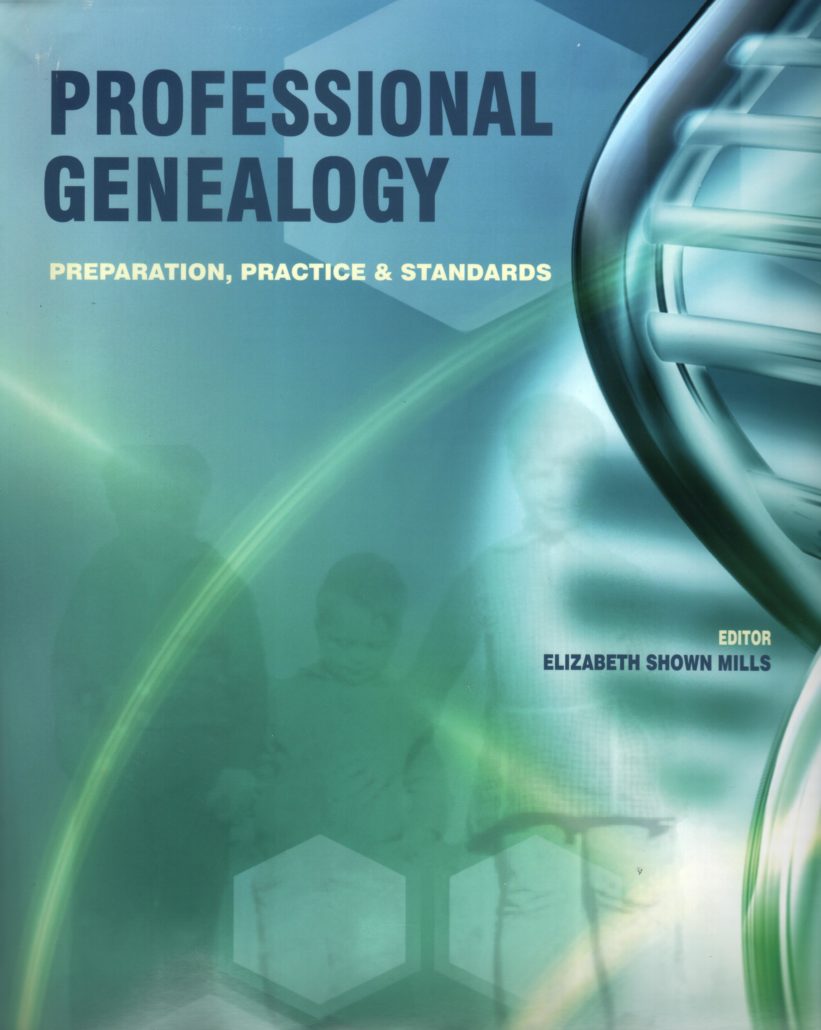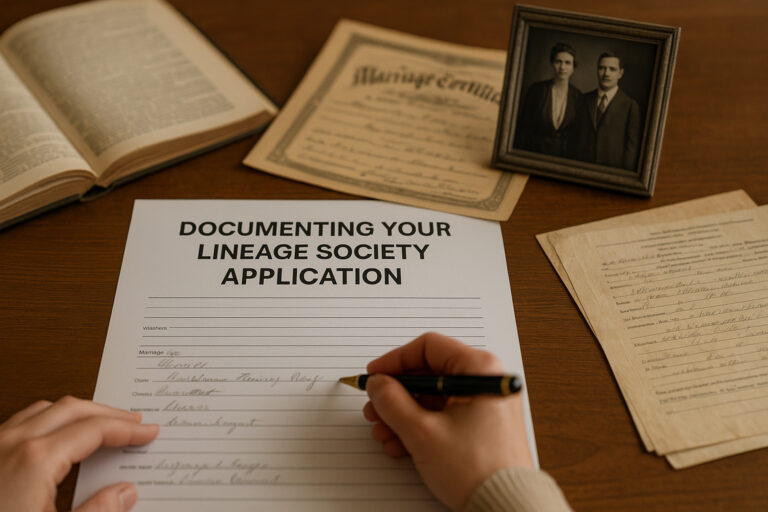
Meeting Lineage Society Requirements: Part 1
By Barbara J. Mathews, CG, FASG, and Darcie Hind Posz, CG
(Excerpted from Professional Genealogy: Preparation, Practice & Standards)
Societies exist for the sake of their society—not necessarily for the sake of genealogy. Each lineage and hereditary society has a different objective, mission statement, and purpose. Because criteria for applications are not one-size-fits-all, we need to know each society’s processes, resources, rules, and standards. When we are able to put ourselves in the shoes of the person who will be reviewing our application, we will be able to prepare successful applications.
Our first step toward preparing an application is always the same. We should obtain and completely read the guidelines or rules of that particular society. Failure to do so will set us up for a fall—or at least for a letter from the qualifying genealogist requesting additional documentation to meet requirements.
We should also obtain a blank copy of the lineage application and study the layout. Some forms begin with the applicant as the first generation, while other forms have the qualifying ancestor as Generation One. We read through all portions of the blank form. Typically, there will be three sections: the lineage section, the qualifying-service section, and the sourcing or documentation section. As we proceed, we should feel free to ask questions that arise. Some societies have study groups, web pages for queries, and courses to assist current and prospective members. Most societies have published their guidelines.
Whether we are preparing an application for ourselves or others, our own standards, ethics, and professionalism should be consistent. For this reason, we keep the manual Genealogy Standards front-and-center in our work, in addition to the society’s own set of rules.
You will also need to identify a “qualifying” ancestor. Most lineage groups have printed publications that list eligible men and women—often with personal information such as year and location of birth and death, identity of spouse, service, and place of residence at time of service. The DAR website offers a database, the “Genealogical Research System (GRS),” that is updated daily as new information is obtained through verifying applications. It gives researchers easy access to the most recent information on qualifying ancestors, errors in previously accepted lineages, common ancestors within a lineage, residences, service details, and source citations. For other societies, printed publications listing eligible ancestors frequently can be found on the society’s website, in the reference sections of local libraries, at websites that digitize books, or by asking a local chapter or registrar affiliated with the society.
1Board for Certification of Genealogists, Genealogy Standards, 2d ed. (Nashville: Ancestry Imprint, Turner Publishing, 2019.
If the targeted ancestor has not been previously approved, you will have to establish the eligibility. Service requirements range from society to society. Once you have determined what form of service a particular society requires for a qualifying ancestor, the accuracy of service should be verified with the best available resources. When multiple people of the same name exist during a specific period, we must clearly establish the residence and identity of the qualifying person.
Thorough use of court records, gazetteers, land grants and deeds, and tax rolls is essential; and evidence can be drawn from these records in creative ways. As a case in point: There may be several John Smiths in a particular county. If, say, a land entry can be correlated with a juror summons and the birth of a child that is noted in a church record, it not only confirms a connection between father and child, but it also establishes that the man was old enough to perform civil service and possess the land that establishes residence for his place and time.
Once the lineage and documentation is as complete as possible, reviewing the application for common errors will ensure that it meets the standards set forth by the society. All points considered, success rests in following the rules and applying timeless standards for a final product that enhances the field and assists future genealogists and society members.Excerpted with permission from Mathews & Posz, “Lineage Applications,” Elizabeth Shown Mills, ed., Professional Genealogy: Preparation, Practice & Standards (Baltimore: Genealogical Publishing Co., 2018), 391–412.




